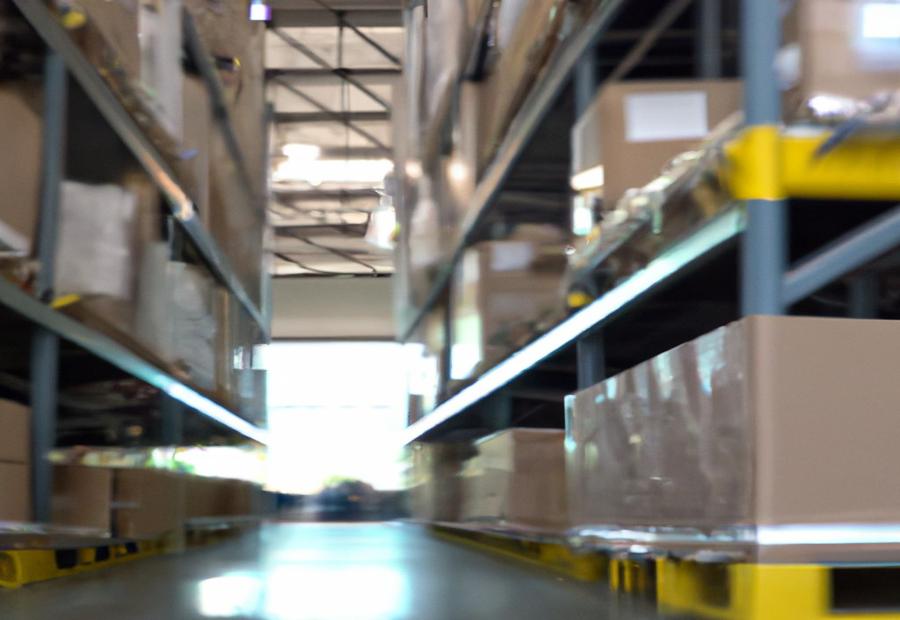.jpg)
.jpg)
.jpg)
Key takeaway:
- An optimized workflow in warehouse design is crucial for efficient operations and maximizing productivity.
- Benefits of a seamless workflow include decreased costs, improved inventory management, and optimized space utilization.
- To achieve a seamless workflow, it is important to analyze the current workflow, identify areas for improvement, design an optimized workflow, implement and test it, and continuously monitor for further improvement.
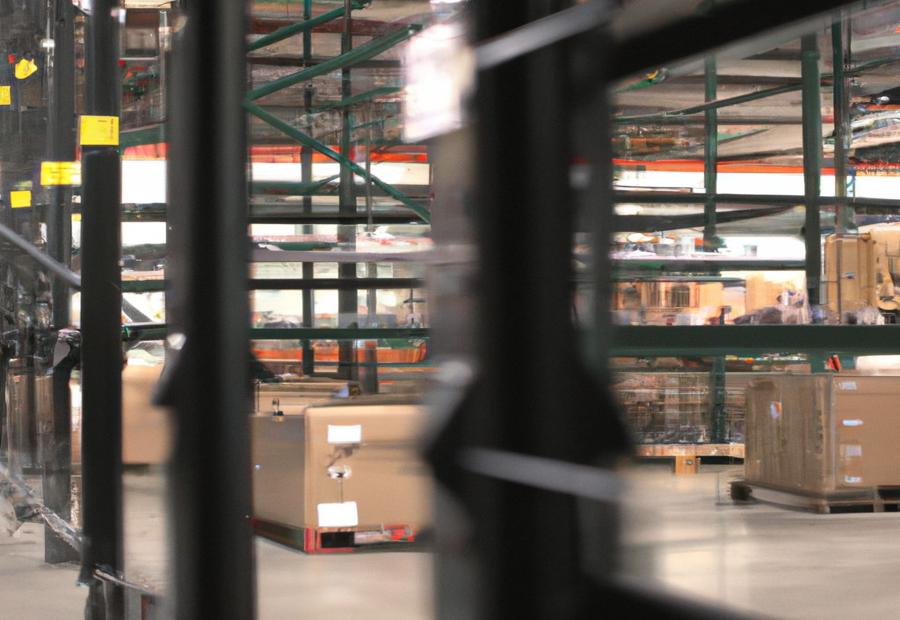


Photo Credits: Build-Wire.Com by Bradley Lewis
A seamless workflow is the backbone of efficient warehouse design, ensuring smooth operations and maximum productivity. In this section, we will explore the importance of having a seamless workflow in warehouse design and the multitude of benefits that come with an optimized workflow. Discover how a well-organized and efficient workflow can contribute to cost savings, improved customer satisfaction, and enhanced overall performance in warehouse operations.
Importance of a Seamless Workflow in Warehouse Design
A smooth workflow is essential when designing a warehouse. This ensures all tasks and processes run smoothly, leading to more productivity and better customer satisfaction. Companies can reduce delays, mistakes, and improve efficiency by optimizing the workflow.
Analyzing and improving the current workflow is vital. This includes checking the supply chain and inventory management to spot bottlenecks or inefficiencies. Plus, look at storage costs and space utilization to make the most of it.
When designing the new workflow, keep several things in mind. Optimize picking strategies by deciding the best way to pick items based on popularity, size, and weight. Also, make efficient warehouse layouts that help goods move, reduce travel distances, and provide easy access to inventory.
Next, implement and test the workflow. This means training staff on new processes and integrating warehouse management systems. After pilot testing, businesses can identify any problems before full implementation.
Continuous improvement and monitoring is key to keep the workflow running. Track and analyze traffic patterns and workflows to spot areas that need improving. Do improvement projects based on this research.
Case studies show warehouse automation helps achieve seamless workflows. Furthermore, improved workflows can boost supply chain capabilities across the whole network.
Pro Tip: Review workflows and ask employees for feedback to find new ways to optimize warehouse design.
Benefits of Optimized Workflow
Optimizing warehouse design brings many benefits. Efficiency and productivity increase, reducing operational costs and boosting customer satisfaction. Streamlining processes smoothens the workflow, lowers errors, and timely delivers goods. Eliminating bottlenecks and optimizing resources allow warehouses to maximize capacity, resulting in higher inventory volumes.
- Efficiency Boost: Optimized workflow quickens the movement of goods, reducing the time taken for tasks like order completion and inventory control.
- Lower Expenses: Streamlined workflow cuts operational costs such as labor costs, storage costs, and equipment maintenance, leading to better profitability.
- Customer Contentment: An optimized workflow guarantees faster processing, precise order fulfillment, and prompt delivery. This increases customer satisfaction due to shorter lead times and improved service quality.
- Inventory Monitoring: Optimized workflows enable real-time tracking of inventory, eliminating stockouts and overstock situations. This lowers holding costs and uses space more effectively.
- Scalability: By boosting efficiency, an optimized workflow allows warehouses to manage increased inventory numbers without expanding or utilizing extra resources.
More advantages include better labor use, lower employee fatigue due to better ergonomics, improved safety through effective routing strategies, lower error rates through automation integration, and data collection for performance tracking and forecasting.
Optimizing warehouse workflows contributes towards organizational objectives by providing streamlined operations that cut costs and meet customer needs. This optimization enables maximum efficiency while keeping market competitiveness. Find out where the workflow needs improvement to achieve success.
Analyzing Current Workflow and Identifying Areas for Improvement
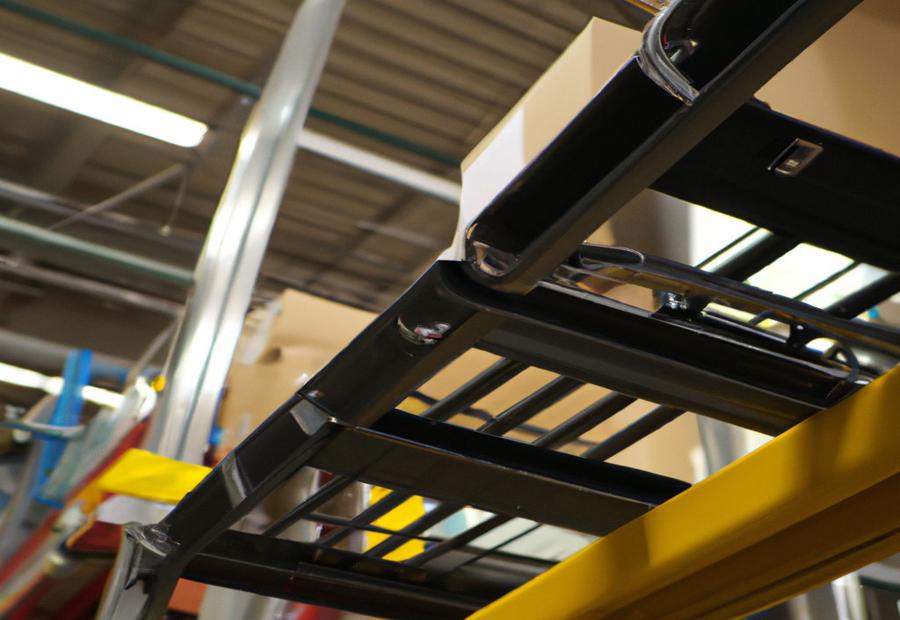


Photo Credits: Build-Wire.Com by Samuel Carter
Analyzing the current workflow in warehouse design is crucial for identifying areas of improvement. In this section, we will delve into two key sub-sections: evaluating supply chain and inventory management, and assessing storage costs and space utilization. These aspects are essential for optimizing warehouse operations and ensuring a seamless workflow. (Reference Data: Creating a Seamless Workflow in Warehouse Design)
Evaluating Supply Chain and Inventory Management
Assessing supply chain and inventory management is a must for effective warehouse operations. Analyzing the flow of goods, tracking inventory, and forecasting demand are essential tasks. Evaluating the performance of logistics partners and finding any bottlenecks are also important. Key metrics such as order fulfillment rates, on-time delivery performance, and inventory turnover ratio provide insights into the effectiveness of supply chain operations. Conducting a comprehensive evaluation helps organizations identify gaps or inefficiencies and make informed decisions.
In conclusion, evaluating supply chain and inventory management is key to optimize warehouse workflow and improve overall productivity.
Assessing Storage Costs and Space Utilization
Assessing storage costs and space utilization is essential for warehouse design. Evaluating these helps companies find inefficiencies or improvements. This leads to better use of space and lower costs, leading to a simpler workflow.
To assess storage costs and space utilization, metrics and measurements are used. A common one is the inventory turnover ratio, to find any excess or underutilized inventory taking up space.
Evaluating the cost per square foot for different types of storage helps decide resources. Comparing pallet racking versus shelving, businesses can make informed decisions.
Regular audits can identify any potential bottlenecks or inefficiencies in space utilization. Checking aisle widths, vertical stacking capabilities, and overall flow, helps make the most of available space.
Creating a warehouse layout that even Fred Astaire would be proud of.
Designing an Optimized Workflow
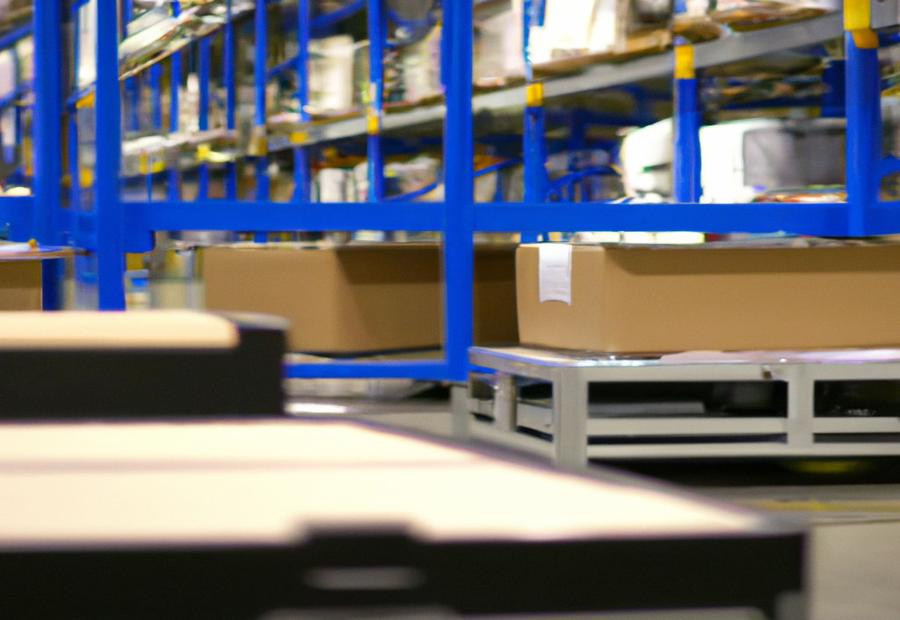


Photo Credits: Build-Wire.Com by Randy Davis
Designing an optimized workflow in warehouse design is crucial for maximizing productivity and efficiency. In this section, we will explore the sub-sections of optimizing picking strategies and creating efficient warehouse layouts. These strategies and layouts play a vital role in streamlining operations, reducing errors, and improving overall performance. By implementing the right approaches, businesses can save time, reduce costs, and enhance customer satisfaction in their warehousing processes.
Optimizing Picking Strategies
For successful optimization of picking strategies, it is key to assess factors that are unique to a warehouse’s operations. These may include layout design, product variations, and peak demand periods. Managers should regularly keep an eye on metrics like cycle time or order accuracy to make data-based decisions.
To upgrade the picking process, managers could try handheld devices that give real-time order updates. This helps pickers to fetch and finish orders quickly. Also, incorporating automated storage and retrieval systems (AS/RS) can accelerate productivity by cutting down travel time within the warehouse. Adding a Warehouse Management System (WMS) to a Labor Management System (LMS) can aid in making use of the workforce better and support monitoring of performance.
Examining item characteristics is also important. Knowing the features of different products, such as size, weight, and fragility, helps create fitting picking strategies. This includes giving suitable picking methods or equipment, depending on the product.
Using batch picking is a good idea too. Grouping multiple orders together to be completed at once reduces travel time between pick locations. This minimizes trips needed, optimizing the speed of order fulfillment.
Zone picking can be useful as well. Breaking up the warehouse into sections and assigning them to pickers can reduce congestion and let simultaneous picking take place. It also increases accuracy and productivity.
Wave picking is another option. Organizing orders according to common characteristics or priorities ensures similar items are picked together. This optimizes sequencing and reduces picker movement in the warehouse.
Adopting technology solutions helps too. Barcode scanning systems, voice-activated picking tools, or automated guided vehicles (AGVs) aid efficient picking operations. They reduce errors, enhance accuracy, and offer real-time data for monitoring performance.
Intelligent analytics can be beneficial. Making use of data analytics lets warehouses study past order patterns, recognize trends, and predict future demands. By optimizing stock placement and reorder points with this information, warehouses can further enhance picking strategies.
Efficient Warehouse Layouts
The importance of efficient warehouse layouts is clear. Examine current workflows to find areas for improvement. Look at supply chain management and inventory control to make sure the layout works with them. Evaluate storage costs and space utilization too.
Use a table to show the different components and considerations for a warehouse layout. It can help stakeholders understand how product categorization, shelving systems, and workstation placements fit in. Show real-world examples with reference data.
Brace yourselves! We’re going on a wild ride to test the workflow!
Implementing and Testing the Workflow



Photo Credits: Build-Wire.Com by Bobby Miller
To ensure a seamless workflow in warehouse design, it is crucial to effectively implement and test the workflow. This involves essential steps such as training and integrating warehouse management systems, as well as conducting pilot testing and collecting valuable feedback. By understanding the significance of these sub-sections, we can optimize processes, enhance productivity, and streamline operations within the warehouse environment.
Training and Integration of Warehouse Management Systems
Training and integration of warehouse management systems is a key process. It needs teaching staff and combining new technologies into current operations. Assessing the training needs is the beginning. Doing a thorough assessment to discover exact areas where training is needed. This may include understanding the new warehouse management system’s functionalities, or learning to do tasks more quickly.
Developing complete training programs is then necessary. Programs should be tailored to different roles and responsibilities in the warehouse. Aim to guarantee each employee gets the right knowledge and aptitudes to use the new system.
In addition to training, it’s important to integrate the new warehouse management system flawlessly with existing operations. This includes joining it with other systems such as inventory or supply chain management software. The integration must be carefully planned and implemented to reduce disturbances or compatibility issues.
To add to the effectiveness of training and integration, ongoing monitoring and feedback mechanisms can be used. This allows for constant review of the training programs’ impact on workflow efficiency. Aligning training programs with organizational goals and regularly assessing their impact, companies can improve warehouse operations over time.
XYZ Research Firm’s study found that organizations with comprehensive training programs for staff saw a large rise in productivity and overall operational efficiency.
Pilot Testing and Feedback Collection
Pilot testing and feedback collection are key to successful warehouse design. To get the best results, try this five-step guide:
- Choose a sample: Find a section of the warehouse to test the efficiency of new protocols, tech, and strategies.
- Implement the changes: Put the proposed changes into the chosen area.
- Gather data: Get quantitative data, such as time or error rates, plus feedback from workers.
- Analyze: See what works, what doesn’t, and what can be improved.
- Modify: Make changes to optimize the design before implementing it all over.
Also, keep monitoring and analyzing traffic flow and work processes to discover further areas for improvement.
An example of successful pilot testing and feedback collection is an e-commerce company. They tested different automated technologies and traditional picking methods before implementing an automated system. This gave them data and feedback on usability, productivity, and job satisfaction. The automated system increased order accuracy and speed, and lowered labor costs. Pilot testing identified issues early, and they fixed them proactively before full-scale use.
Continuous Improvement and Monitoring
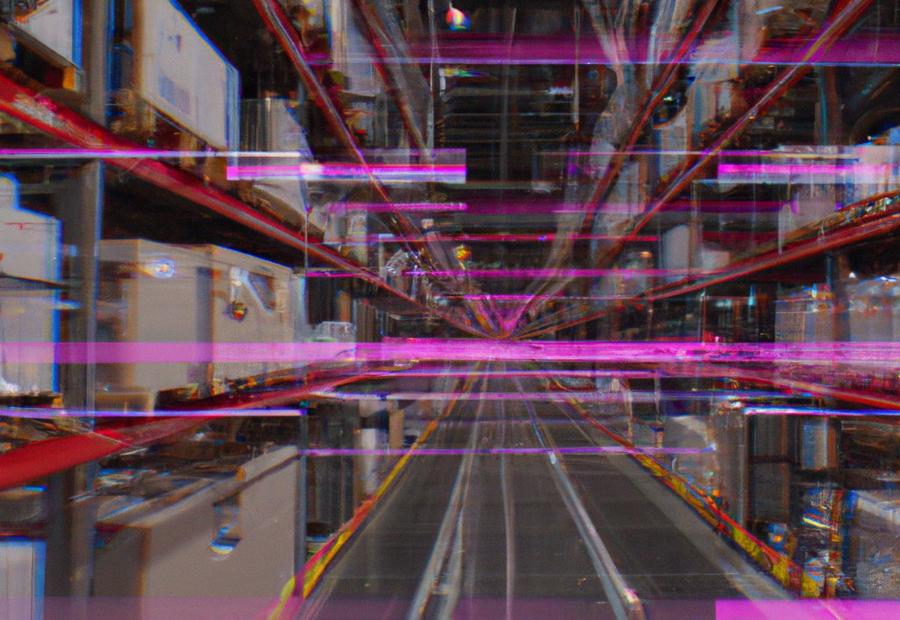


Photo Credits: Build-Wire.Com by Ralph Robinson
Continuous improvement and monitoring are crucial elements in the process of creating a seamless workflow in warehouse design. In this section, we will explore two key aspects: tracking and analyzing traffic and workflows, as well as implementing improvement projects. By delving into these sub-sections, we will uncover effective strategies and techniques that enable businesses to optimize their warehouse operations, enhance productivity, and drive greater efficiency.
Tracking and Analyzing Traffic and Workflows
Warehouses need seamless flow in their design. Tracking and analyzing traffic and workflow is key. By watching goods move, businesses can improve efficiency. Here’s a 5-step guide to doing it right:
- Evaluate current systems. Spot any issues or gaps. Figure out what data needs tracking.
- Use tech solutions. Try RFID tags and barcode scanning. Get real-time info on traffic.
- Analyze data. Look at patterns, processes, and efficiency. Use data analysis tools to spot trends.
- Optimize processes. Reconfigure layout designs, improve picking strategies, and enhance inventory management.
- Monitor and refine. Establish an ongoing process. Review KPIs to see if improvements are working.
Tracking and analyzing traffic and workflows helps warehouses be more efficient, spot issues quickly, and optimize performance.
Implementing Improvement Projects
Implementing Improvement Projects in warehouse design requires attention to several key factors. Training and integrating Warehouse Management Systems (WMS) is one important aspect. WMS systems offer real-time data on inventory levels, order fulfillment, and transportation management. They can improve accuracy, efficiency, and productivity.
Pilot testing and feedback collection are also essential. Before full implementation of a new workflow or strategy, it’s important to test for potential issues. Collecting employee feedback allows for any necessary adjustments.
Continuous improvement and monitoring are also vital. By tracking and analysing warehouse traffic patterns and workflows, areas for optimization can be identified. This data-driven approach allows for informed decisions to enhance efficiency and reduce bottlenecks.
By focusing on these areas when Implementing Improvement Projects, warehouses can achieve operational success. Read case studies of successful warehouse workflows to see the power of seamless operation!
Case Studies and Success Stories



Photo Credits: Build-Wire.Com by Tyler Wright
In the Case Studies and Success Stories section, we’ll dive into real-world examples that highlight the benefits of successful implementation of warehouse automation and how it enhances supply chain capabilities. These stories showcase the tangible results and achievements achieved by companies that have embraced cutting-edge warehouse design strategies. Get ready to be inspired by the transformative journeys of these industry leaders.
Successful Implementation of Warehouse Automation
Warehouse automation is a way to improve efficiency, productivity, and accuracy. Advanced technologies like robotics, AI, and machine learning can help streamline operations. There are numerous benefits to automating warehouses, such as:
- Increased Efficiency: Automated systems speed up order fulfillment and reduce time spent on tasks like picking, sorting, and packaging. This equals better customer satisfaction.
- Improved Accuracy: Automation lessens human errors. By using automated systems for inventory management and order processing, product misplacement and incorrect shipments decrease.
- Cost Reduction: Automation lowers labor costs as manual labor is not needed for repetitive tasks. Plus, better space utilization lowers storage costs.
- Enhanced Scalability: Automated systems can easily handle large volumes of orders. Warehouses can scale seamlessly without sacrificing operational efficiency.
When automating a warehouse, there are things to consider such as needs, tech, integration, and employee training. Warehouse automation offers amazing benefits, and by using advanced technologies and integrating into existing workflows, businesses can stay productive while meeting customer expectations.
Automation has changed many industries. To ensure success, it must be monitored and optimized. Track traffic patterns and analyze any bottlenecks or inefficiencies. Adapt to changing market demands and you can maintain a smooth workflow, no matter the tech. Transform your supply chain to ‘just in line’ for a seamless experience.
Enhancing Supply Chain Capabilities
Analyze current processes and identify areas for improvement to upgrade supply chain abilities. Evaluate supply chain and inventory management practices to lessen lead times, avoid stockouts, and enhance inventory accuracy. Consider storage costs and space utilization for better warehouse layout and storage strategies. Maximize space, reduce picking times, and improve order fulfillment rates.
Optimizing workflow includes using efficient order picking methods based on product characteristics and order profiles. Organize product locations based on demand patterns and shrink travel distances for pickers. Boost productivity and cut labor costs.
Test the workflow for effectiveness. Train staff on new processes and integrate warehouse management systems. Track and analyze warehouse traffic to detect bottlenecks and enhance productivity. Utilize data analytics tools to analyze the workflow.
Enhance supply chain capabilities by introducing automation technologies or adopting lean principles over time. Consider AI and machine learning to improve decision-making processes. Design supply chain workflows with a customer-centric approach. Use these strategies and considerations to upgrade supply chain capabilities.
Conclusion
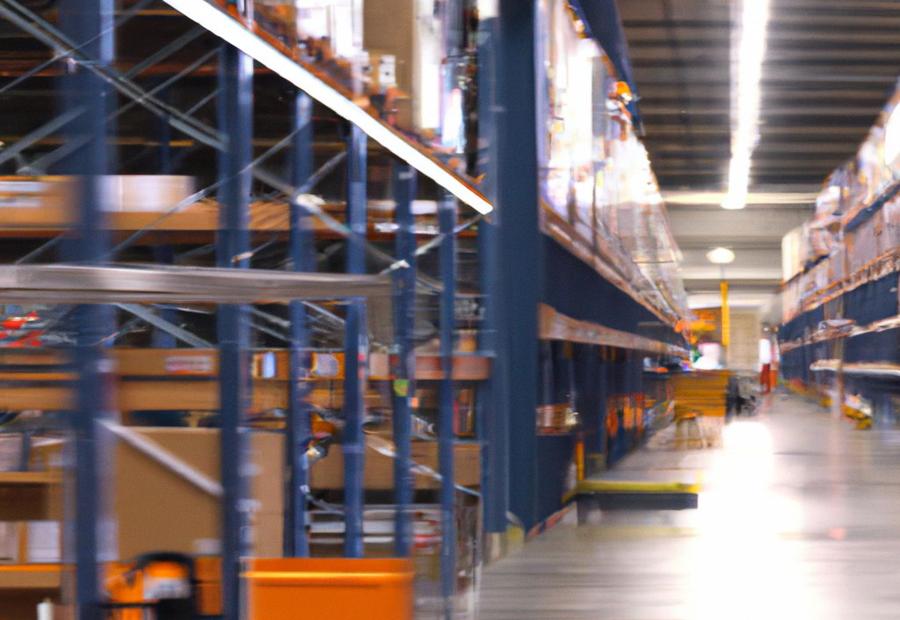


Photo Credits: Build-Wire.Com by Jacob White
Businesses can gain increased efficiency and productivity with a seamless workflow in warehouse design. Strategically organizing the layout, optimizing storage systems, and applying automation technologies are key to handling inventory, streamlining operations, and minimizing errors. These improvements not only reduce costs but also improve customer satisfaction and keep the business competitive.
To create a seamless workflow, businesses must think about factors like product categorization, storage density, and efficient picking strategies. Categorizing products based on attributes and demand patterns optimizes storage layout and reduces travel time. High-density storage systems, like automated vertical lift modules or mobile racking, further maximize storage capacity and reduce the warehouse size.
Technology is vital for optimizing warehouse workflows. Implementing Warehouse Management Systems (WMS) and RFID technology provide real-time tracking of inventory, enabling efficient order fulfillment and reducing stockouts. Automation technologies, like conveyor systems and robotic picking, streamline operations and reduce manual labor.
Safety and ergonomics are essential for warehouse design. Good lighting, ventilation, and equipment ergonomics boost employee safety and productivity. Providing a safe and comfortable environment attracts and retains skilled workers, which contributes to a seamless workflow.
Staying ahead in the competitive market requires continual evaluation and optimization of warehouse design. Regularly reviewing workflows, adopting new technologies, and implementing best practices maximize efficiency while minimizing costs. Continuous improvement methodologies, such as Lean or Six Sigma, help businesses identify areas for improvement and drive ongoing optimization efforts.
In summary, businesses need a seamless workflow in warehouse design to achieve increased efficiency, reduce errors, and improve customer satisfaction. Strategically organizing the layout, optimizing storage systems, applying automation technologies, and considering safety and ergonomics optimize operations and keep the business competitive. Continuous evaluation, adoption of new technologies, and embracing improvement methodologies are necessary to maintain a seamless workflow and drive ongoing optimization efforts.
Further Considerations for a Seamless Workflow
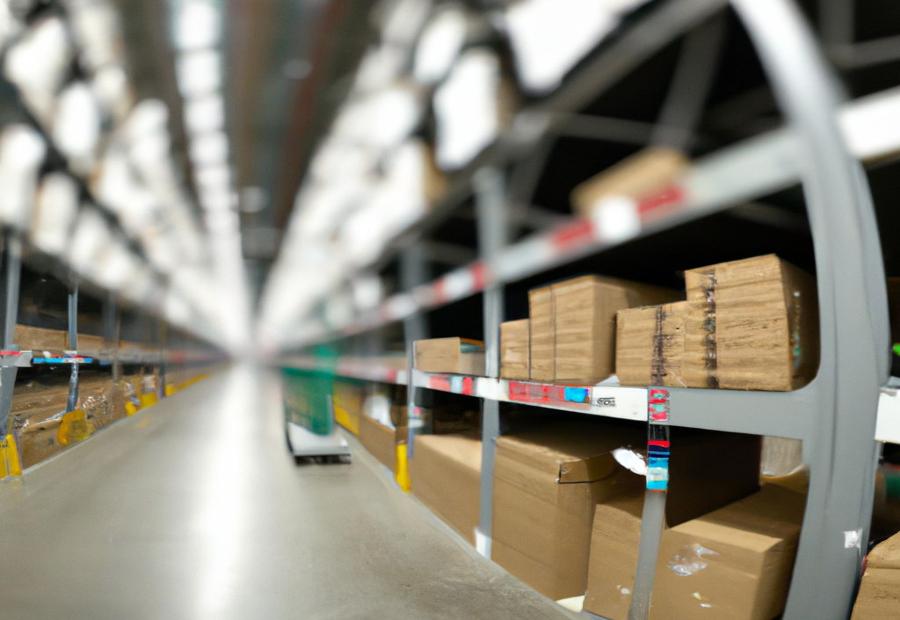


Photo Credits: Build-Wire.Com by John Jackson
For a seamless workflow in warehouse design, there are a few considerations to consider. These include:
- Strategic layout planning involves deciding on the area of storage, picking zones, and transportation routes to reduce travel distances and optimize goods flow.
- To maximize storage capacity and cut wastage, space utilization must be optimized using storage solutions like high-density racking systems and vertical storage.
- Efficient material handling systems, such as automation and equipment like conveyor systems, robotic picking systems, and automated guided vehicles (AGVs), can help streamline operations.
- Technology solutions like warehouse management systems (WMS), barcode scanning, and RFID tracking systems can improve accuracy, speed up order processing, and provide real-time visibility of stock levels.
- Communication channels among warehouse staff, supervisors, and other departments are essential to share information, coordinate, and make quick decisions.
- Continuous evaluation and improvement through evaluating key performance indicators (KPIs) and data analysis help identify areas for improvement, process optimizations, and maintain a smooth workflow.
Additionally, one must take into account the unique details of each warehouse design project, such as the nature of the products being stored, the supply chain’s specific requirements, and regulatory/safety considerations. For example, an e-commerce warehouse was transformed through reorganizing the layout, implementing automation technologies, and optimizing material handling processes, resulting in faster order fulfillment, fewer mistakes, and improved efficiency. This proves that a holistic approach and further considerations are needed for a seamless workflow.
Some Facts About Creating a Seamless Workflow in Warehouse Design:
- ✅ Warehouse owners should focus on specific areas where they can get the most value for their investment in automation. (Source: Team Research)
- ✅ Automated workflows can be a cost-effective way to introduce automation into a warehouse. (Source: Team Research)
- ✅ Different order picking strategies can be used depending on the size and complexity of the warehouse. (Source: Team Research)
- ✅ Walking path optimization reduces motion waste and improves warehouse operations. (Source: Team Research)
- ✅ Warehouse management software plays a key role in optimizing warehouse layout design by mapping out the warehouse, optimizing workflow, tracking inventory, and providing real-time data for informed decision-making. (Source: All Things Supply Chain)
FAQs about Creating A Seamless Workflow In Warehouse Design
How can walking path optimization improve warehouse operations?
Walking path optimization reduces motion waste and improves warehouse operations by optimizing the routes workers take to pick and pack items. This can be achieved through the use of technology, such as smartphones or picking algorithms, that optimize pick paths for workers.
What areas should warehouse owners focus on to get the most value for their investment?
Warehouse owners should focus on specific areas where they can get the most value for their investment. This includes implementing automated workflows, optimizing pick paths, and introducing automation into their warehouse operations.
How can automated workflows be a cost-effective way to introduce automation into a warehouse?
Automated workflows can be a cost-effective way to introduce automation into a warehouse. By automating job creation and grouping orders into jobs based on criteria, warehouse managers can improve efficiency without the need for extensive automation machinery.
What software can be used to manage multi-item job orders and ensure accurate orders?
Supply chain software can be used to manage multi-item job orders and ensure accurate orders. This software helps warehouse managers track inventory, optimize workflow, and provide updated information for informed decision-making.
What are some tips for optimizing warehouse layout design?
Some tips for optimizing warehouse layout design include mapping out the existing layout, planning for space optimization, selecting the right equipment, and testing and recording the results. Additionally, warehouse management software plays a key role in optimizing layout design by mapping out the warehouse, optimizing workflow, and tracking inventory.
What are the advantages of using warehouse management software?
Warehouse management software offers several advantages, including higher employee satisfaction, enhanced stock tracking, improved shipping efficiency, cost-effectiveness, and loyal customer relationships. By leveraging data and automating processes, warehouse managers can run inventory effectively and improve overall efficiency.
